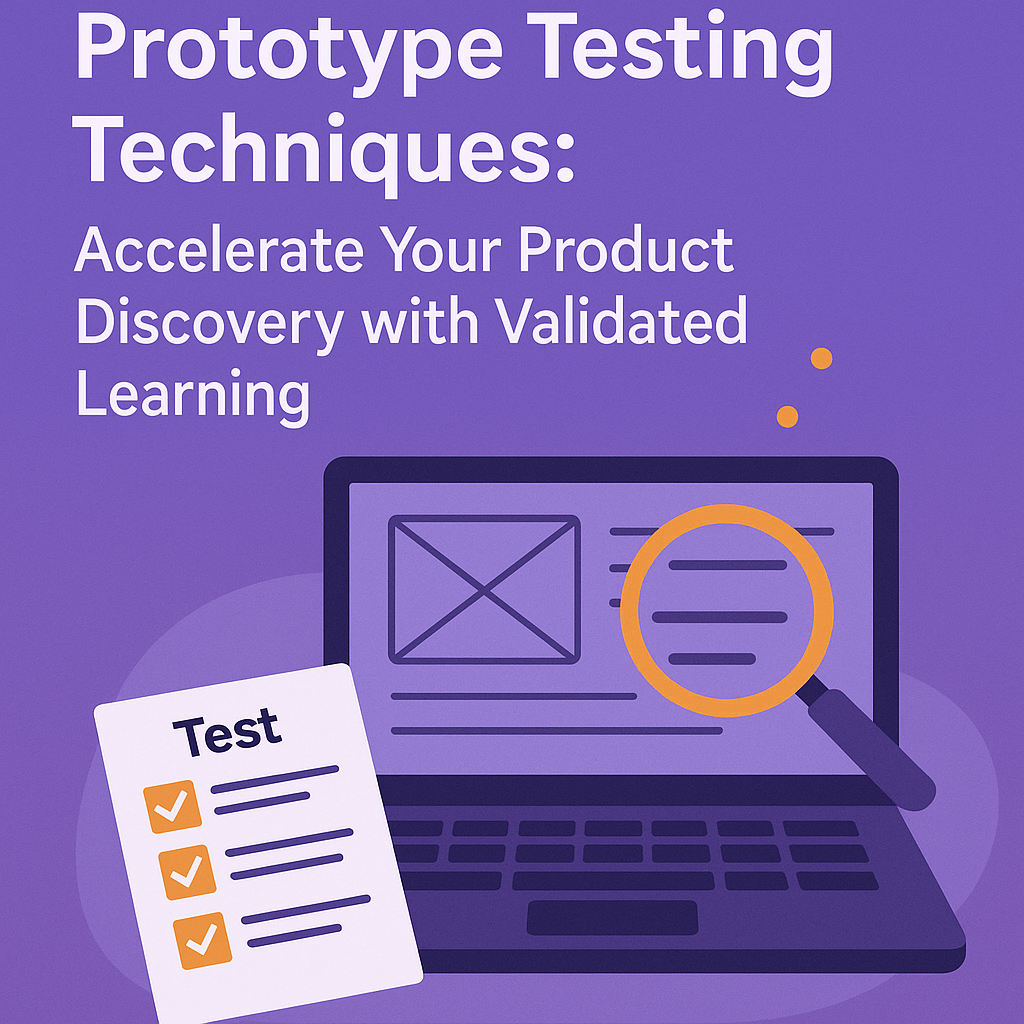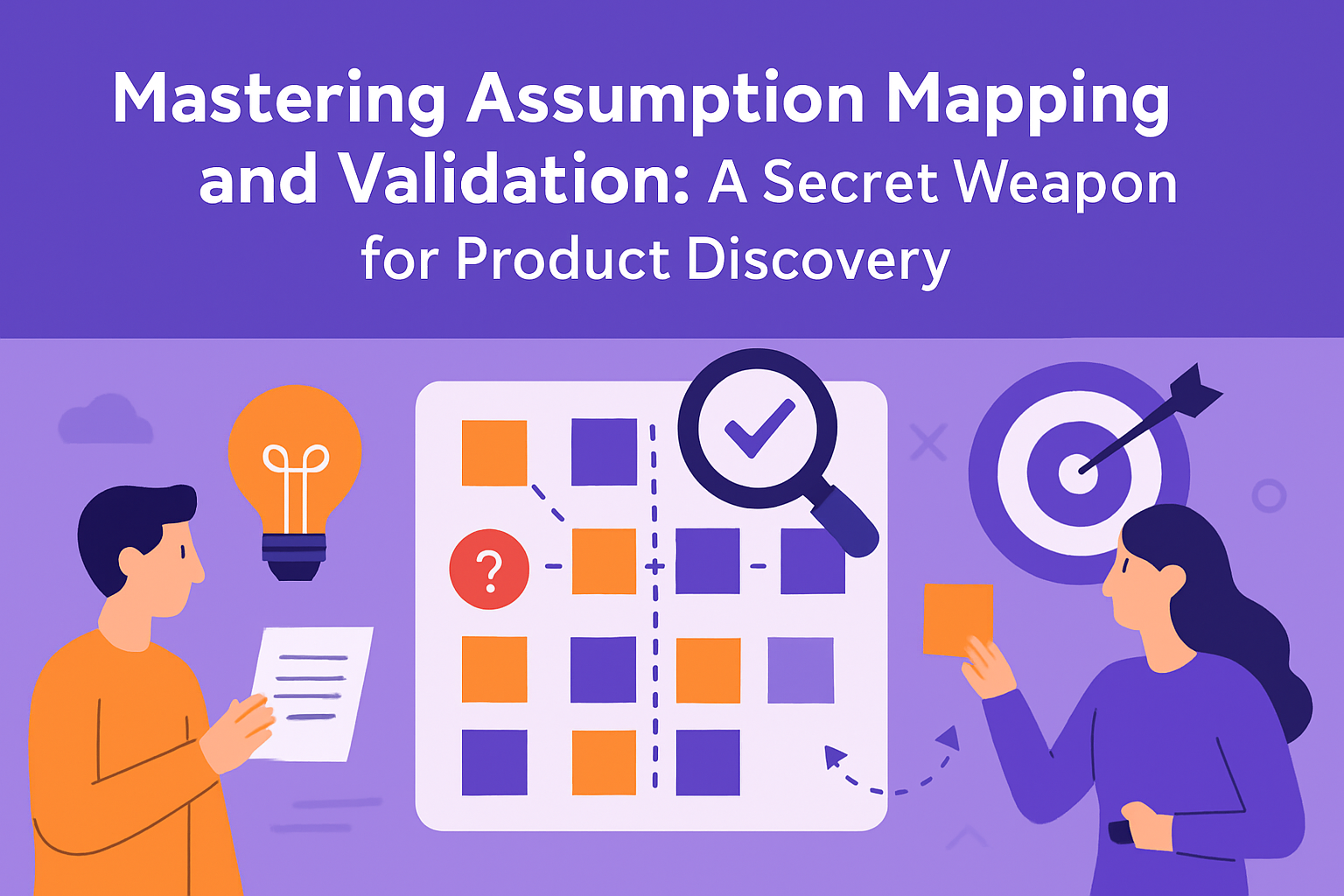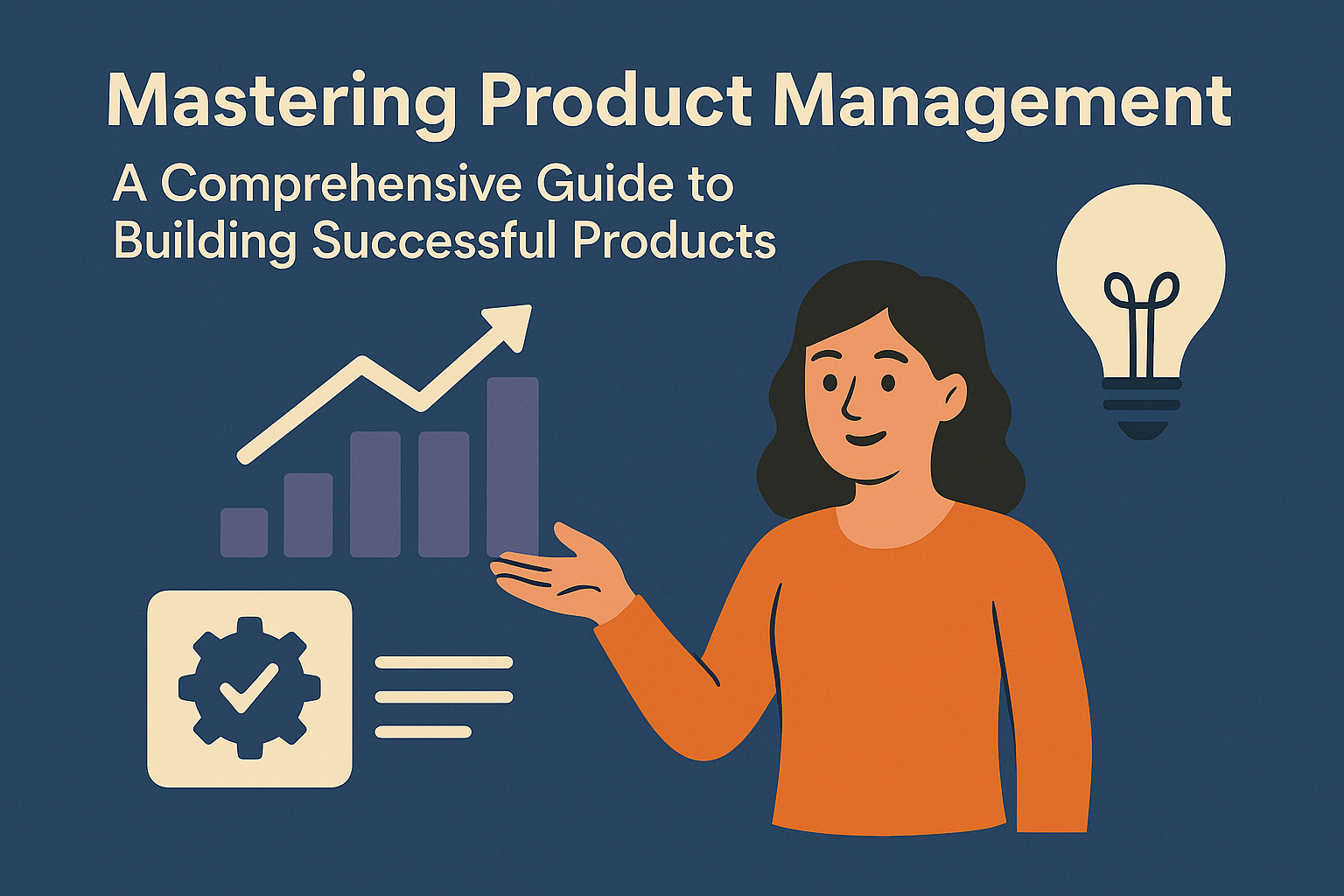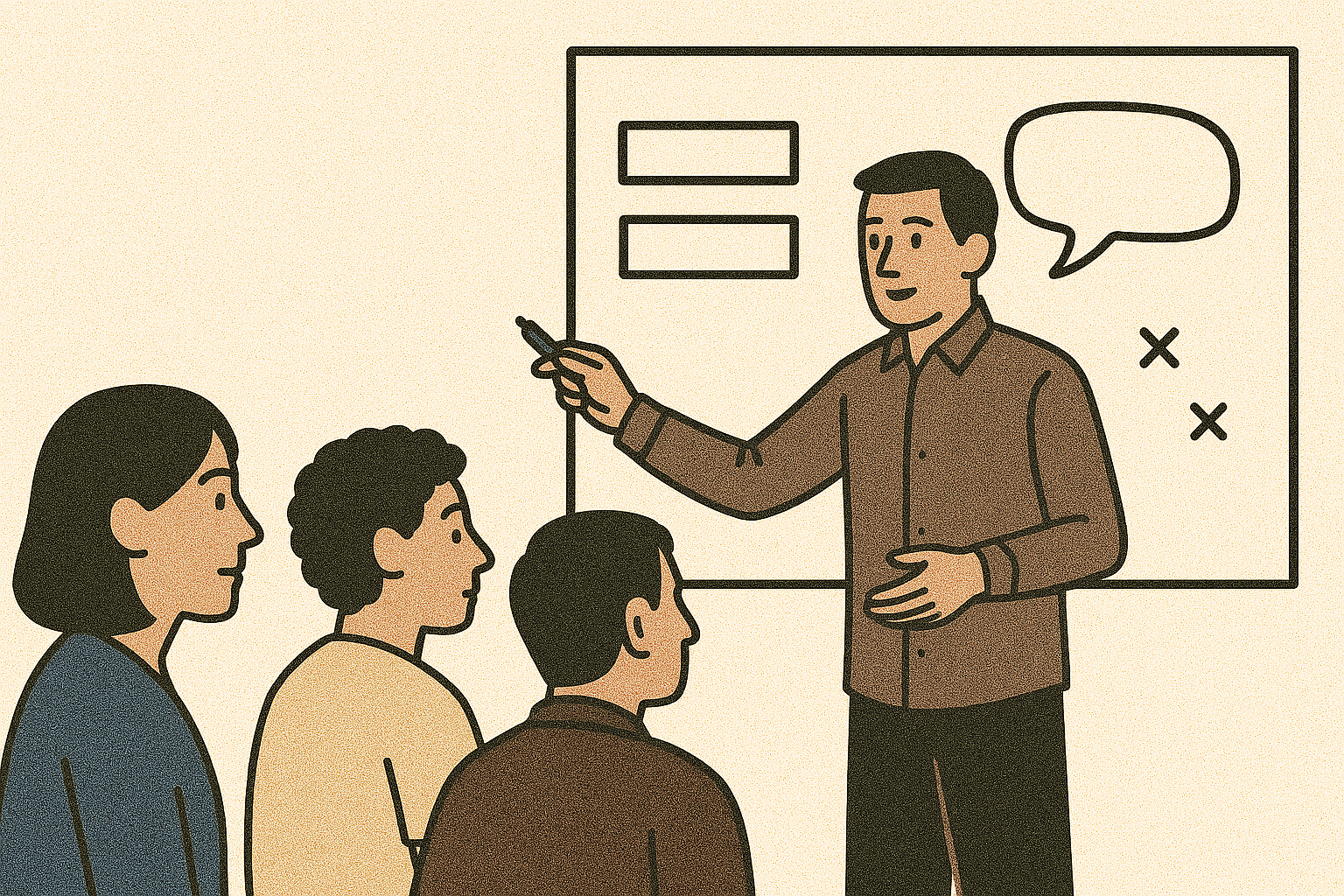Cast Spells on Product Discovery
Maximizing Product Discovery: The Ultimate Guide to Customer Interview Preparation
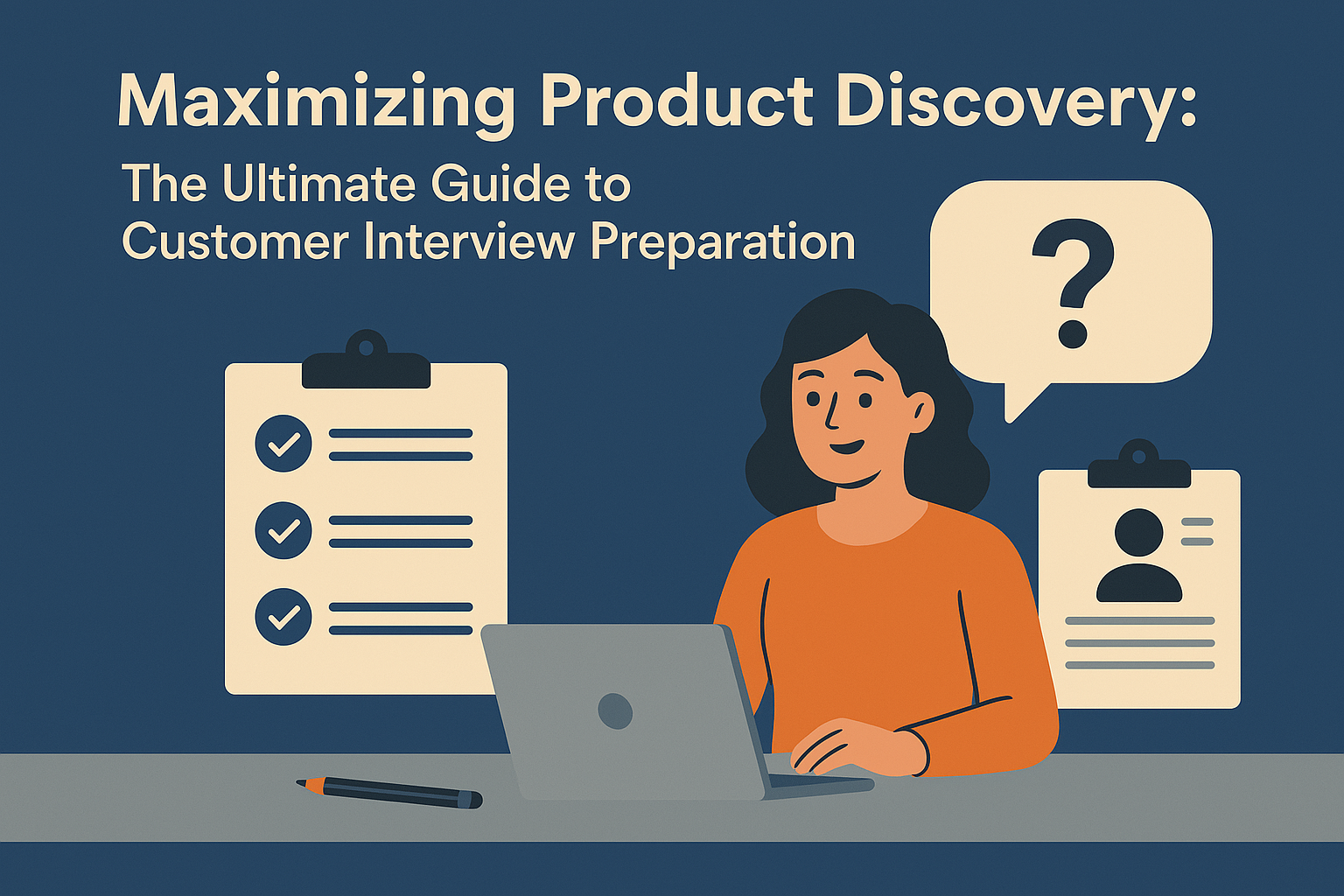
Customer interviews are the cornerstone of effective product discovery. While many product managers rush into these conversations eager to gather insights, the real magic happens before you ever hit the record button. Proper preparation doesn't just save time—it transforms customer interviews from casual chats into strategic insight-generating sessions that drive meaningful product decisions.
Why Preparation Matters in Product Discovery
In the fast-paced world of product development, it's tempting to jump straight into customer interviews with minimal planning. The pressure to move quickly often leads teams to schedule calls with users before establishing what they truly need to learn. This approach may seem efficient on the surface, but unprepared interviews typically yield superficial insights that fail to reveal true user needs. Without proper preparation, you'll likely find yourself asking biased questions that merely confirm what you already believe, missing critical opportunities to explore unexpected pain points, and struggling to connect your findings to actual development priorities.
A recent McKinsey study found that companies excelling at product discovery are 55% more likely to achieve successful product launches. What separates these high-performing teams from the rest isn't necessarily more time spent with customers, but rather their systematic approach to customer research—beginning with thorough interview preparation that ensures every conversation generates meaningful insights.
The Pre-Interview Checklist for Effective Product Discovery
Preparing effectively for customer interviews requires more than just scheduling calls and jotting down a few questions. It demands a structured approach that sets you up for discovery success. Here's your comprehensive guide to preparing for customer interviews that yield truly actionable product discoveries:
1. Define Clear Discovery Objectives
Before scheduling a single interview, take the time to articulate exactly what you need to learn. Product teams often make the mistake of conducting research without clarity on their objectives, which leads to unfocused conversations and ambiguous takeaways. Start by identifying specific uncertainties you're trying to resolve and assumptions that need validation. Consider what decisions this research will inform and how the insights will connect to your delivery process.
For example, rather than setting a vague objective like "learn about user needs," create a focused goal such as: "Understand how mid-sized marketing teams currently track campaign performance to identify opportunities for streamlining their workflow." This level of specificity guides your entire interview process and ensures that the insights you gather will directly inform product decisions.
Writing your objectives down and sharing them with stakeholders before proceeding is crucial for alignment. This documentation creates accountability and helps prevent the research from being influenced by shifting priorities during the discovery process.
2. Identify the Right Participants
The quality of your insights depends heavily on who you interview. Not all users are created equal when it comes to product discovery conversations, and speaking with the wrong participants can lead to misleading conclusions. Consider which user segments experience the problem most acutely and who truly represents your target market. Think about what mix of current customers versus prospects will give you the most balanced perspective.
When recruiting participants, look beyond job titles to understand which roles within organizations have the most relevant perspectives on your problem space. Many product teams fall into the trap of speaking only with friendly customers or the loudest voices, which creates significant blind spots in their understanding. Aim for diversity in your participant pool, including users with varying levels of experience, different use cases, and even some who have expressed frustration with existing solutions.
For most discovery initiatives, conducting 5-8 interviews per user segment provides sufficient insight to identify patterns while remaining manageable. Remember that the goal isn't statistical significance but rather deep understanding of user contexts and needs.
3. Create a Discussion Guide—Not a Questionnaire
Effective customer interviews balance structure with flexibility. Rather than creating a rigid questionnaire that you follow verbatim, develop a thoughtful discussion guide that outlines the territory you want to explore while leaving room for unexpected discoveries. Your guide should flow naturally from broader context-setting questions to more specific inquiries about problems and current solutions.
Begin with warm-up questions that build rapport and make the participant comfortable sharing honestly about their experiences. Then transition into context-setting questions about their role and responsibilities to understand the broader environment in which they operate. The core of your interview should focus on problem exploration questions that uncover genuine pain points, followed by inquiries about current solutions to understand existing approaches and workarounds.
Including scenario-based questions helps reveal desired outcomes more effectively than direct questions about feature preferences. Finally, include wrap-up questions that capture final thoughts and create space for participants to share insights you didn't think to ask about.
Remember that your discussion guide serves as a roadmap, not a script. The most valuable insights often emerge when you follow unexpected threads in the conversation, so prepare to go off-script when participants raise interesting points that weren't part of your original plan.
4. Eliminate Leading Questions
One of the most common pitfalls in interview preparation is crafting questions that inadvertently lead participants toward particular answers. These biased questions undermine the entire discovery process by confirming what you want to hear rather than revealing objective truth. Carefully review your discussion guide to identify and remove questions that suggest a particular answer, contain assumptions about user behavior, focus on solutions rather than problems, or can be answered with simple yes/no responses.
For example, instead of asking "Would you find a dashboard helpful for tracking campaign performance?" (which presupposes a dashboard is the solution), ask "How do you currently monitor your campaign results?" This open-ended framing invites participants to describe their actual process without leading them toward a specific solution.
The language you use matters tremendously. Questions that begin with "Why don't you..." or "Wouldn't it be better if..." subtly communicate your preferences to participants, who will often try to please the interviewer rather than share their authentic experience.
5. Prepare Your Environment and Tools
The technical aspects of interview preparation are often overlooked but can significantly impact the quality of your discovery. Creating the right environment for productive conversation means eliminating potential distractions and ensuring your technology works seamlessly. Test your recording equipment or software before each interview session to prevent technical difficulties that might disrupt the flow of conversation or, worse, result in lost data.
Ensure you have a quiet, distraction-free environment for conducting your interviews, whether remote or in-person. Prepare consent forms for recording and data usage, and send these to participants in advance to address any privacy concerns before the interview begins. Set up your note-taking system to capture insights efficiently without becoming distracted from the conversation.
Having backup plans for technical difficulties shows respect for your participants' time and demonstrates professionalism. Additionally, scheduling buffer time between interviews gives you space to process what you've learned and make adjustments to your approach before speaking with the next participant.
6. Assign Team Roles
When multiple team members participate in customer interviews, clear role definition prevents confusion and improves the experience for both the team and the participant. Without clearly assigned responsibilities, team members might interrupt each other, ask redundant questions, or create an intimidating environment for the interviewee.
Designate a primary interviewer to lead the conversation and maintain its flow. This person should be skilled at building rapport and asking follow-up questions. Assign a dedicated note-taker who can focus entirely on documenting insights without the pressure of simultaneously guiding the conversation. For other observers, clarify how and when they should participate—whether that means remaining silent throughout or having a designated time for questions.
Establish subtle signals for when to move on to new topics or dig deeper into interesting areas. These nonverbal cues help the team navigate the conversation seamlessly without awkward transitions or interruptions that might disrupt the participant's train of thought.
7. Conduct a Pre-Interview Briefing
Taking time to review key information about each participant before their interview significantly enhances the quality of your conversation. This preparation demonstrates respect for their time and allows you to personalize the discussion to their specific context. Before each interview, review details about the participant's role and company to understand their perspective. If they're an existing customer, familiarize yourself with their history with your product and any previous feedback they've provided.
Preparing for Insight Capture
The interview itself is just the beginning of your product discovery process. Without a plan for capturing and processing the insights you gather, even the most revealing conversations can fail to drive meaningful product decisions. Before conducting your first interview, develop a systematic approach for transforming raw conversations into actionable insights.
Start by establishing a consistent process for documenting insights immediately after each interview. The human memory begins degrading information quickly, so schedule 15-30 minutes immediately following each conversation to capture your observations while they're fresh. This documentation should go beyond basic note-taking to include your interpretations and initial hypotheses.
As interviews accumulate, develop methods for identifying patterns across multiple conversations. These patterns often reveal the most significant opportunities for your product. Create a system for connecting these findings to your product strategy, ensuring that discoveries directly influence your roadmap rather than existing in isolation from development decisions.
Think carefully about how you'll share learnings with the broader team, especially those who weren't present during the interviews. Consider creating an insight template with dedicated sections for key quotes that capture the participant's voice, observed pain points that highlight user struggles, current workarounds that reveal ingenuity and unmet needs, desired outcomes that indicate what success looks like for users, potential opportunities for your product, and follow-up questions for future research.
The most sophisticated product teams also establish frameworks for translating these insights into development priorities, creating a continuous flow from discovery to delivery that ensures user needs directly shape what gets built.
Common Preparation Pitfalls to Avoid
Even experienced product managers make predictable mistakes when preparing for discovery interviews. Being aware of these pitfalls helps you avoid them and elevate the quality of your research.
One of the most common errors is overloading the interview agenda with too many topics. This approach seems efficient—trying to extract maximum value from each participant—but it typically backfires by generating surface-level insights across many areas rather than meaningful depth in the most important areas. Instead, focus your preparation on exploring fewer topics more thoroughly, allowing time to ask follow-up questions and understand the nuances of user experiences.
Another frequent mistake is preparing for presentations rather than conversations. Many product managers inadvertently structure interviews like interrogations, moving mechanically through questions without truly engaging with responses. Effective preparation creates space for dialogue, with enough structure to maintain focus but enough flexibility to explore unexpected avenues. This balance requires thoughtful planning about which areas are essential to cover and which allow for more exploratory conversation.
Product teams often neglect emotional signals in their preparation, focusing exclusively on what users say rather than how they say it. Yet emotional responses—frustration, excitement, hesitation, relief—often reveal the most significant pain points and opportunities. Include in your preparation plan ways to notice and document these emotional cues, whether through video recording, dedicated observers, or specific note-taking approaches.
Finally, solo preparation almost invariably leads to blind spots in your research. When one person develops interview guides in isolation, the questions reflect a single perspective and often miss important areas of exploration. Involve diverse team members in the preparation process—engineers, designers, marketers, customer support—to ensure your discovery encompasses multiple viewpoints and addresses questions from various disciplines.
From Preparation to Actionable Insights
Effective interview preparation sets the foundation for your entire product discovery process. It's not merely about logistics or scheduling—it's about creating the conditions for genuine insight that drives product innovation. When done right, thorough preparation ensures that you're asking the right questions to the right people in the right way, enabling insights to be systematically captured and analyzed.
Proper preparation helps keep the team aligned on research objectives throughout the discovery process, preventing the common drift where initial questions get forgotten or deprioritized. Most importantly, it creates clear pathways for discoveries to translate into development priorities, bridging the gap between what you learn and what you build.
The investment of time in preparing for customer interviews pays dividends throughout the product development lifecycle. Teams that excel at preparation find themselves building features that genuinely solve user problems, avoiding the common waste of engineering resources on solutions nobody wants. They're able to make confident, evidence-based decisions rather than relying on assumptions or the loudest voice in the room.
Remember that the quality of your product discovery is directly proportional to the quality of your preparation. The most successful product teams don't leave these crucial conversations to chance—they approach them with the same rigor and intentionality they apply to development itself.
Take Your Product Discovery to the Next Level
Ready to transform your approach to customer interviews and product discovery? In today's complex product landscape, thorough preparation for customer interviews is no longer optional—it's essential for competitive advantage. Our AI-powered platform helps product teams prepare, conduct, and analyze customer interviews more effectively by streamlining the entire discovery process.
With our integrated tools, you can develop professional discussion guides, manage participant recruitment, automate insight capture, and ensure that valuable user insights seamlessly connect to your development process. The platform provides templates, best practices, and analytics that elevate your discovery methodology while reducing the time investment required.
Request a demo today to see how we're helping innovative product teams bridge the gap between discovery and delivery, ensuring that every customer conversation generates maximum value for your product development efforts.
castspells provides next-generation product management tools that solve the real pain of product managers being caught between different stakeholders. Our platform connects all your discovery activities with insights and seamlessly transfers them to your delivery environment, turning customer conversations into product innovations that truly resonate with users.
ultimate product discovery

ultimate product discovery
